Bears
The chances of meeting a bear when you are hiking is extremely rare. In my 53 years of experience, I’ve encountered one bear in the 1960’s and another bear in the 1970’s. Both were along the same trail. In the early 1990’s I studied bears’ behavior and with this knowledge I’m able to see bears with frequency. But without this knowledge, the chance of encountering one would be extremely rare. You may be able to find one bear in every 4000 trail miles. The bear is the ultimate symbol of wilderness; it is king of the hill, and it’s a privilege to see a bear, at a safe distance of course.

I believe that there are two kinds of bears. They behave differently. They are the National Forest bear and the National Park bear. The National Forest bear gets hunted and it is extremely wary of humans. It will avoid your presence and flee away; these pose little threat. The National Park bear never gets hunted and is not wary of humans; it associates food with humans. They are bold and after your picnic basket. These can be a threat because bears are forever in search of a meal. They travel long distances guided by their noses. Their acute olfactory senses can guide them to a meal miles away.
Bear attacks are extremely rare. Wood ticks, mosquitoes, and bees cause far more doctor visits. My only dangerous encounter occurred while I was hiking alone in the Oregon Grand Rhonde River. I was exhausted by fly fishing for steelhead and quietly entered a hawthorn berry patch. I quickly noticed that the only berries were in the tops of these bushes. Suddenly an angry black bear false charged me. It stopped short and snapped its jaws
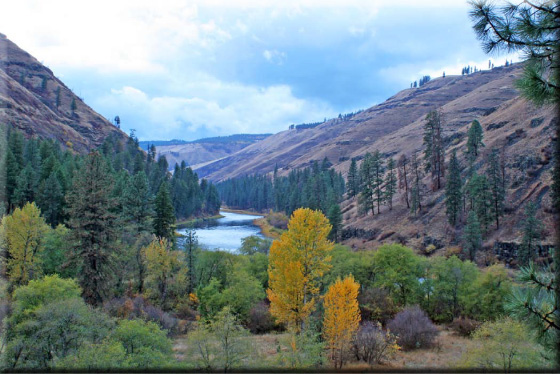

angrily with its ears laid back and its athletic fury humbling me. I looked downward and slowly walked backwards out of the berry patch. I had received a severe trespass warning. This bear clearly told me that this was his property and these were his berries.
I had made several errors. The first one was that I was too tired to make any noise. My tired feet could only tread lightly. I failed to notice the missing berries up to about the six foot level. There was also plenty of scat that looked like berry pie filling. The next year when I was hiking the same place, I recalled what had previously happened. I had no trouble spotting the scat and the berries were well gleaned. I started to sing. Now I cannot sing, even Paula Abdul would disapprove. The bear was there, but this time he made his presence known to me from a safe distance. The bear enjoyed my singing and became a hiking companion for about ¼ mile. His ears were not upright and his body language was that of curiosity.
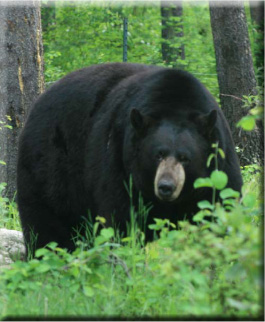
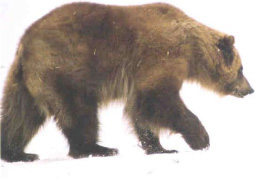
I believe bears don’t want to fight any more than I want to fight. Give them a safe retreat and they will take it. Warn them of your presence. Surprises are not good encounters. I will always cherish these two encounters. It made my steelhead fishing an adventure.
Bears woof as a warning; they are unpredictable and can be very vicious. A bear’s fighting ability is probably equal to that of a two or three hundred pound Doberman pinscher guard dog. A few years ago my wife and I were in an area that I would consider as wild. We saw a beautiful stream and next to it was a quaint old cabin. I got out of the car to take photos and heard right away a big “Woof!” When I got back to the car, my wife said she didn’t know that I could jump so high vertically from a standing position. She was practically rolling on the ground with laughter and wondering why I started to crouch down and look all around. Then she said, “Did you hear that big dog bark?” I told her it wasn’t a large dog but a bear with a warning that we were on his property.
Handle black bear encounters by avoiding eye contact. Look down and noticeably bow your head. Eye contact is a sign of your aggression. Don’t run or act like a prey animal escaping. This may trigger a feeding response in the bear: “Don’t let the food run away.” Give the bear the respect it deserves and allow it to retreat in dignity.
Now if an unpredictable bear charges, fight back by screaming, yelling and kicking. Spread your arms wide and look like a formidable foe. If the bear doesn’t retreat, drop your pack or jacket to divert the bear and retreat. If
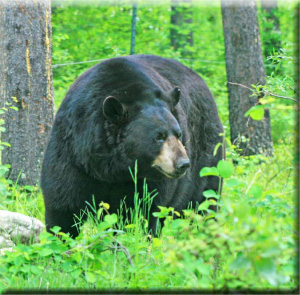

you contact the bear, play dead. Roll up motionless in the fetal position. Protect your skull, neck, and face with your hands or pack or whatever is handy. Be motionless. Hopefully the bear will believe he’s won and leave.
Grizzly bears are at the top of the food chain. It’s best to avoid them altogether; only view them at a safe distance. Grizzlies are loud and make lots of noise while on the move. Take time out to listen for them and carefully watch for them. I’ve spotted all my grizzlies out in the open. They are bold travelers. Be sure to steer clear of deep thickets and heavy vegetation where you may surprise one. If you spot a bear, retreat. Never hike at night; all bears are nocturnal. Also hike in groups of four or more.
If you encounter a bear at close quarters, look at its body language. Ears back, woofing, growling, and snapping of teeth are signs of aggression. Again, don’t run and never move like a prey animal. Speak quietly; hold your arms out at your sides and stand your ground. But you must give the bear a respectful retreat route. If you are charged, wave your arms and yell loudly. Hopefully the charge will be thwarted. Pepper spray might work, but it’s only effective at very close range. You must react like a quick-draw artist and spray the bear down in a split second.
If you are attacked, roll up and lay motionless in the fetal position. Protect your neck, face, skull, and vitals. Be motionless and pray that he will lose interest and leave.
When you are hiking, make noise; ringing a bear bell continually will emit sounds. Occasionally speak loudly and sing. Let the bear be aware that you’re coming. Avoid berry patches, carrion thickets, and heavy vegetation, and be alert around water sources. Streams mask the noise of your movements and the bear’s travel.
All problem bears, whether grizzly or black bears, know where to find food. Their nightly routine may include visiting established campsites, hoping to frighten away campers and to eat their food. I pitch my tent away from these campsites. I also cook my food distant from my campsite. Campfires and cooking are an advertisement to bears that draws them in. Since they come in at night, this is not wise. Camp away from game trails and streams. Camp in an area that has little food like grasses and flowers that will attract bears. Keep yourself clean and avoid scented soaps, perfumes, deodorants and the like. Take frequent baths and sleep in unscented clothing. Pack the clothes you wore when cooking or fishing in a separate, enclosed plastic bag. Store your food safely out of camp hung up in a tree branch about twelve feet off the ground. Food boxes are available that are bear proof. They come in canisters or bullet-proof stuff sacks.
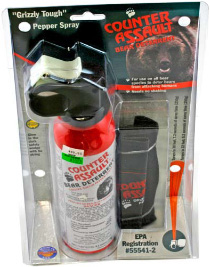
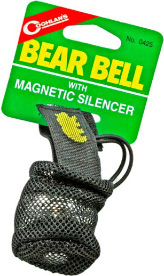

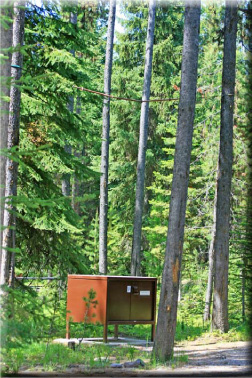
Also, in bear country carry food that requires no cooking and avoid making a campfire. Smoke travels for miles and alerts the bear to possible food. Make your campsite in an open area with a good view of surroundings.
In closing, bees and mosquitoes may cause more injuries, but one’s fear of a bear magnifies the actual threat all out of proportion. Regardless, it’s a treat to see a bear.
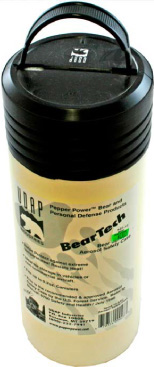
Camping Adventures • Dutch Oven Cooking • Sports Knots
Fly Tying • Freshwater Fishing • Fly Fishing

